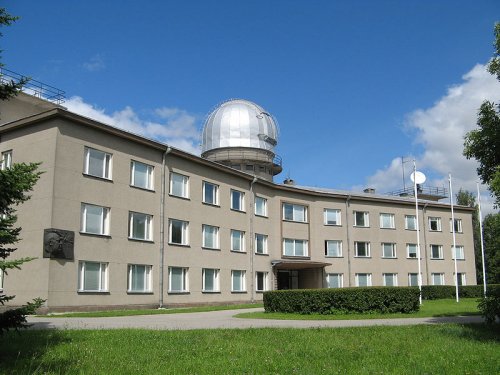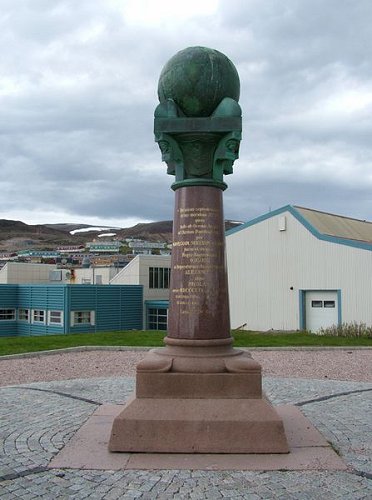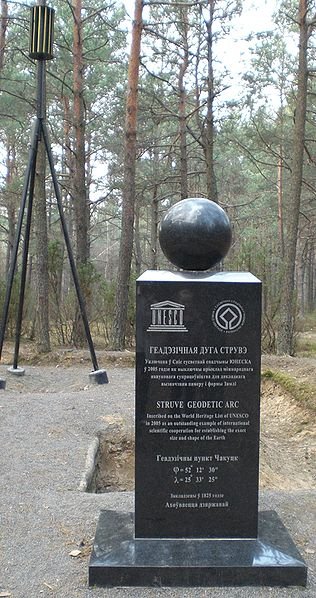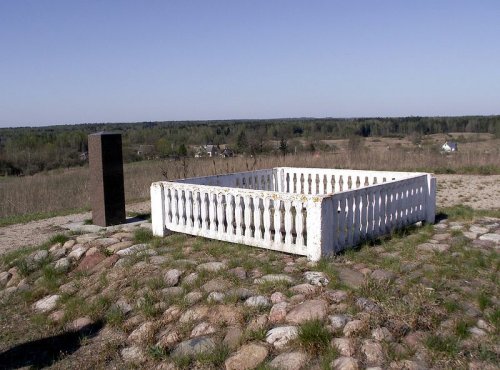
Struve Geodetic Arc
 Go Back - HOME | Latest World Heritage Sites > Europe > World | YouTube : Facebook | About Me : Contact Me
Go Back - HOME | Latest World Heritage Sites > Europe > World | YouTube : Facebook | About Me : Contact MeStruve Geodetic Arc is a chain of survey triangulations that stretches over ten countries in Europe. The geodetic arc was established by German-born Russian scientist Friedrich Georg Wilhelm von Struve, after whom it was named, between 1816 to 1855. Its purpose was to determine the exact size and shape of the earth. Initially the chain passed through just two countries, the then Union between Sweden and Norway (1814-1905) and the then Russian Empire (1721-1917).
The Struve Geodetic Arc was inscribe as a World Heritage Site of transboundary property involving ten countries namely Norway, Finland, Sweden, Estonia, Latvia, Lithuania, Russia, Moldova and the Ukraine during the 29th session of the World Heritage Committee meeting in Durban, South Africa on 10-17 July, 2005.
In inscribing the Struve Geodetic Arc, commemorates the extraordinary example of scientific collaboration among scientists from so many different countries, and the cooperation of the different monarchs for a scientific cause. The approximate location of the station points are shown on the map below.
The first point of the chain, where Struve did most of his experiments, was at the Tartu Observatory, in present-day Estonia. Eventually 258 main triangles and 265 geodetic vertices were mapped out over a course of 10 countries and 2,820 kilometers. The northernmost point of the chain is at Fuglenes near Hammerfest in Norway, while the southernmost is at Staro-Nekrassowka in Odessa Oblast, in the Ukraine.

Tartu Observatory, Estonia
 https://commons.wikimedia.org/wiki/File:Tartu_obs_main_b.jpg
https://commons.wikimedia.org/wiki/File:Tartu_obs_main_b.jpg Oth
Oth

Hammerfest Meridian Monument, Norway
 https://commons.wikimedia.org/wiki/File:Hammerfest_Meridianstein.jpg
https://commons.wikimedia.org/wiki/File:Hammerfest_Meridianstein.jpg Tintazul
Tintazul

Struve Geodetic Arc point at Tchekutsk, Belarus
 https://commons.wikimedia.org/wiki/File:Struve_Geodetic_Arc_point_Tchekutsk_in_Belarus.jpg
https://commons.wikimedia.org/wiki/File:Struve_Geodetic_Arc_point_Tchekutsk_in_Belarus.jpg Frost SL (Sergey Morozov)
Frost SL (Sergey Morozov)

Struve Geodetic Arc point at Meskonys, Vilnius district, Lithuania
 https://commons.wikimedia.org/wiki/File:Me%C5%A1konysgeo.JPG
https://commons.wikimedia.org/wiki/File:Me%C5%A1konysgeo.JPG Rimantas Lazdynas
Rimantas Lazdynas
What to See in Struve Geodetic Arc
In most places, there isn't much to see of the Struve Geodetic Arc, as they are simply small posts in the wilderness that may not be worth your effort. The focal point for your visit should be the Dorpat Observatory in Tartu, Estonia. That's where Struve did most of his experiments. Located on Tõravere Hill, just 20 km to the southwest of Tartu, it is the largest astronomical observatory in Estonia.World Heritage Site Inscription Details
Location: N 59 03 28 E 26 20 16 (actual location spreads over 10 countries)Inscription Year: 2005
Type of Site: Cultural
Inscription Criteria: II, III, VI
Location Map
Visiting Struve Geodetic Arc
Your base for visiting this World Heritage Site is Tallinn, the capital of Estonia. From there, you can make the arrangement to visit Tartu. Latest updates on Penang Travel Tips
Latest updates on Penang Travel Tips

Copyright © 2003-2025 Timothy Tye. All Rights Reserved.